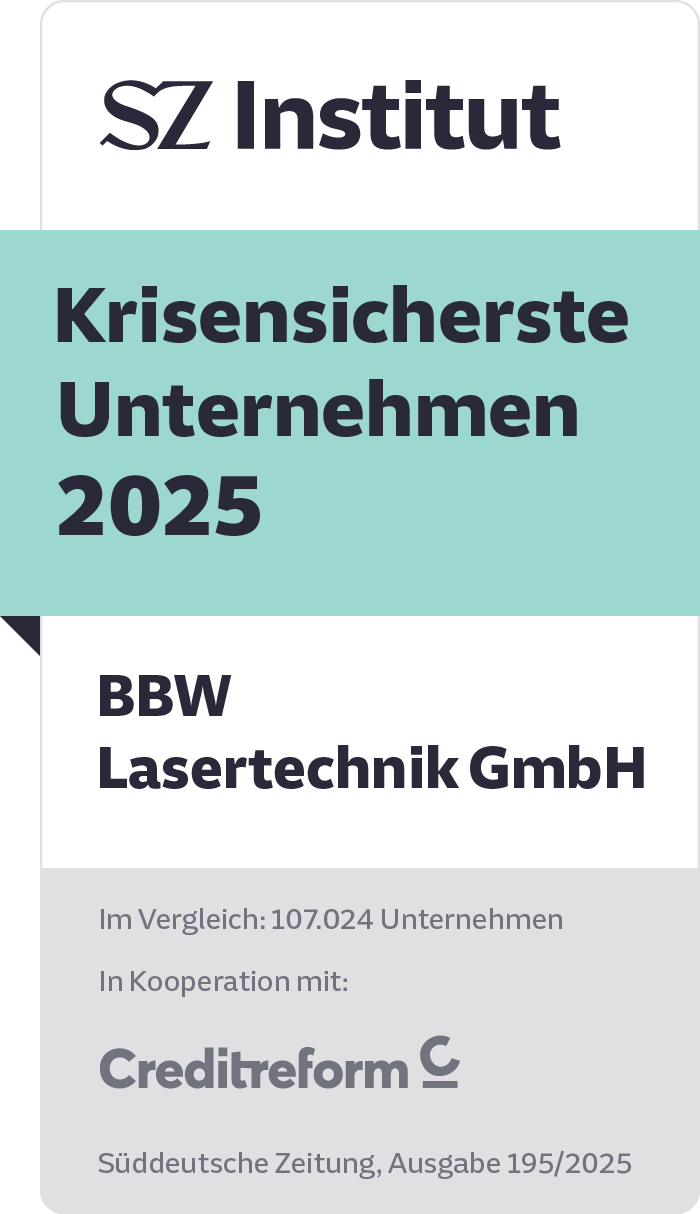
Joining is a crucial step in manufacturing, as it is the point where numerous production chains converge. Laser welding is a joining method that is frequently used in automated industry due to its advantageous properties.
This article compares laser welding with other joining methods. First, laser welding as a material-bonding process is compared with the other basic types of joints, namely force-fit and form-fit joints. Next, the three most important material-bonding joining processes—welding, soldering, and bonding—are compared with each other. Finally, this article highlights the differences between laser welding and other important welding processes.
Laser welding is a material bonding joining process in which the components are joined by atomic or molecular bonds. The resulting joint is usually permanent and is characterized by high load-bearing capacity and low space requirements.
In the case of a form fit, the connection is created by the geometric shape of the components, which prevents them from slipping relative to each other in one or more directions. Such connections are usually easy to separate and are therefore well suited when disassembly is necessary. However, the load-bearing capacity is limited and the dimensions of the components are often larger than with a material-locking process.
Friction lock connections utilize the frictional force that arises when two components are pressed together. This joining method is normally detachable and creates a connection without play. However, the load-bearing capacity depends on the surface properties of the joining partners and may be subject to fluctuations.
Material bonding | Form fit | Friction lock | |
Advantages | High strength, low space requirement | Detachable | Usually detachable, no clearance |
Disadvantages | Non-detachable | High space requirement | Varying load capacity |
Examples | Welding, gluing | Rivets, bolts | Screws, clamps |
In welding, the material of the two components to be joined is melted by local heating, which causes it to mix and then cool again. A filler material is often used, which is usually similar to the base material and additionally strengthens the joint. The resulting joint is characterized by high strength, comparable to that of the base material. One challenge is the often high energy input, which can cause distortion in the component.
Soldering is very similar to welding—but with the difference that a metal alloy is used as an additive, whose melting temperature is below the melting temperature of the components. The base material of the components themselves is therefore not melted, which also makes it possible to join different materials. However, the strength of the soldered joint is generally lower than that of a welded joint.
In bonding, an adhesive is applied between the components and then allowed to cure. The bond is created by the adhesion of the adhesive and the internal cohesion of the adhesive molecules. The exact mechanism of adhesion depends on the specific combination of adhesive and material. In contrast to welding and soldering, the process speed is limited by the curing time of the adhesive.
Laser welding works by using optics to focus a laser beam precisely onto the workpiece. This creates high power densities, which not only melt the material but also partially vaporize it. The escaping metal vapor creates a hole in the molten pool, known as a capillary, through which the laser beam can penetrate deep into the material, where it is absorbed. This enables a particularly deep, narrow seam to be created. In addition, the precise focusing ensures low heat input, which minimizes distortion in the component and enables exact welded joints.
In arc welding, an electric voltage between an electrode and the component creates an arc, which generates the heat required to melt the metal. In metal inert gas welding (MIG) and metal active gas welding, a metal wire acts as an electrode, which melts during welding and serves as a filler material, while in tungsten inert gas welding (TIG), the tungsten electrode remains intact. Arc welding is very versatile and can be operated manually or automatically. However, due to the high heat input, it is not suitable for very fine seams.
Electron beam welding is a welding process in which a focused electron beam strikes the workpiece under vacuum. The kinetic energy of the electrons is converted into heat, causing the material to melt. This process enables deep and clean weld seams, but is very complex and cost-intensive due to the need for a vacuum.
In summary, laser welding as a material-bonding process enables the production of joints with minimal space requirements that can withstand very high loads. The special properties of the laser as a tool also make it possible to economically produce even difficult seam geometries in automated production.